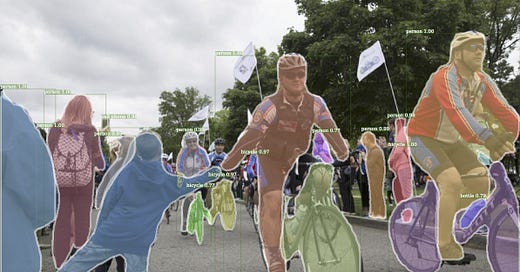Demystifying Object Detection and Instance Segmentation for Data Scientists
I like deep learning a lot but Object Detection is something that doesn’t come easily to me.
And Object detection is important and does have its uses. Most common of them being self-driving cars, medical imaging and face detection.
It is definitely a hard problem to solve. And with so many moving parts and new concepts introduced over the long history of this problem, it becomes even harder to understand.
This post is about distilling that history into an easy explanation and explaining the gory details for Object Detection and Instance Segmentation.
Keep reading with a 7-day free trial
Subscribe to MLWhiz | AI Unwrapped to keep reading this post and get 7 days of free access to the full post archives.




